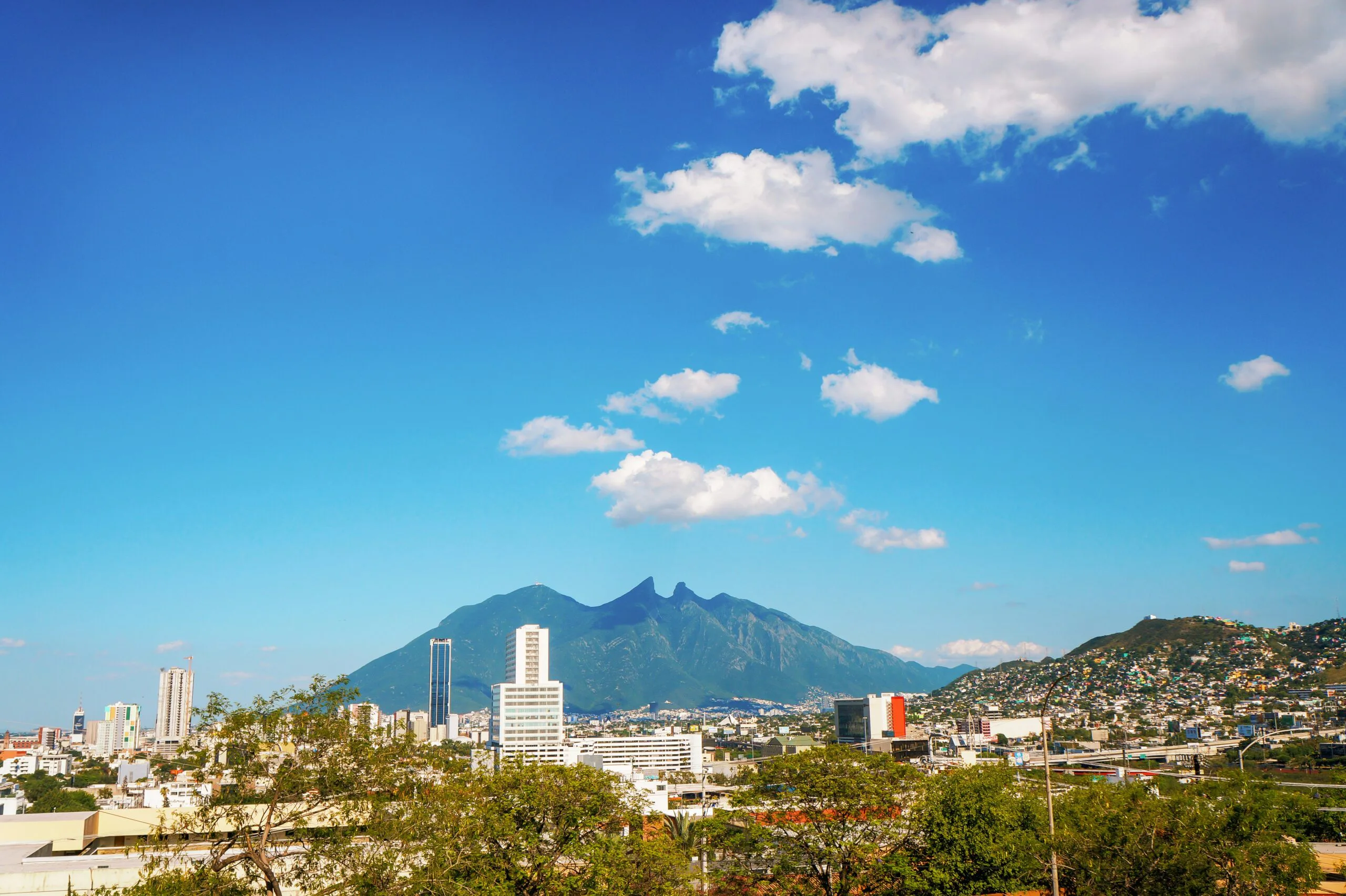The North Star Is Moving: Rethinking Wealth Allocation for Mexican Investors in a Multipolar World

For decades, the implicit “North Star” for Mexican investors has been clear: allocate toward the U.S. and take advantage of domestic opportunities when possible. But that formula is increasingly outdated. Global power is fragmenting, macroeconomic imbalances are deepening, and political risks—both in Mexico and abroad—are evolving in unpredictable ways. The question we seek to answer is: what should Mexican investors be doing today to prepare for tomorrow?
What’s on the Mind of the Mexican Investor?
Most Mexican investors are overexposed to the United States and Mexico, both geographically and psychologically. The U.S. has earned that confidence through decades of outperformance. But we are now entering an age where valuation, fiscal risk, and political uncertainty demand reassessment.
Simultaneously, Mexico is undergoing a complex transformation. While nearshoring, demographics, and geography position the country favorably, risks are rising. The current administration under Claudia Sheinbaum has thus far signaled pragmatic and business-friendly intentions. However, Morena retains high approval ratings, and the political opposition remains too weak to serve as a meaningful counterweight. This sets the stage for a future administration that could lean more radically populist.
Even in an optimistic scenario where Mexico grows rapidly due to nearshoring and industrial expansion, the resulting wealth inequality could fuel calls for redistribution. The real long-term risk for wealthy Mexicans isn’t just judicial reform or weakened democratic institutions—though those are serious—but a future government that sees fiscal reform and targeted taxation as necessary tools to address inequality.
Mexico’s Bright Future—With Shadows
At Bespoke, our outlook for Mexico remains structurally positive. The country benefits from:
- Proximity to the U.S. and an active role in North American supply chains
- Favorable demographics
- A growing consumer class
- Relative political and macroeconomic stability compared to peers
We believe the NAFTA legacy will extend through nearshoring, increased exports, and GDP growth. Global companies are no longer viewing Mexico solely as a manufacturing hub. They now see it as a vital market in itself—evident in recent investments from Mercado Libre, Unilever, BBVA, and others.
However, risks remain: insufficient infrastructure and energy policy, persistent insecurity, and inefficient public resource allocation. These risks, especially if left unaddressed, will create fertile ground for populist rhetoric and policy.
Strategic Asset Allocation in a New Era
“Decisions about how you own (planning structures), where you own (custody and private banking jurisdictions), and what you own (asset allocation) are increasingly consequential.”
This is the essence of a forward-looking strategy. Mexican families may be poised for extraordinary windfalls from their operating businesses or fixed assets, especially if the nearshoring trend plays out fully. But they are also exposed—both politically and economically.
In this environment, three themes must shape asset allocation:
1. Global Diversification
The traditional home bias toward Mexico and the U.S. now carries higher risk. In a multipolar world, ignoring opportunities in regions with strong fundamentals, favorable currencies, and undervalued assets is not just a missed opportunity—it’s a liability.
Swiss francs, gold, even bitcoin—once fringe instruments—are increasingly seen as hedges against monetary debasement. As investors in other jurisdictions adapt to these shifts, Mexican investors remain overly focused on familiar markets.
2. Reassessing Private Markets
Private markets, long the darlings of sophisticated portfolios, are showing signs of strain. The illiquidity premium has failed to materialize for many, and exit routes through IPOs have underwhelmed. Today:
- Discounts in secondaries are widening
- Endowments are exploring sales
- Flexibility is becoming paramount
At Bespoke, we advocate for a “barbell strategy”: maintain core liquidity in public markets, and be selective with illiquid private investments—especially early-stage opportunities with asymmetric return potential.
3. Revaluing Liquidity and Flexibility
Liquidity is no longer a given. In a world marked by geopolitical shifts, technological disruption, and policy unpredictability, the ability to adapt is essential. Portfolios must be constructed with resilience in mind, not just upside.
The U.S. is Not Immune
Let’s be clear: America’s fiscal imbalance matters. Even if a Trump administration slows the growth of deficits (a relative improvement), the U.S. will still be operating under enormous debt burdens. At some point, the reckoning arrives—via taxation, inflation, or monetary debasement.
The post-Cold War period brought about a golden age for U.S.-centric investing. But today’s world is different. Power is more distributed. Economic policy is less predictable. And quality of life in other regions is catching up. The greenest grass may no longer lie across the northern border.
Shifting Growth Frontiers: Beyond Familiar Terrain
While Mexico is an emerging market with long-term potential, the risks it presents are deeply local: political concentration, institutional fragility, and the looming prospect of fiscal reform. These are not generic emerging market concerns—they are specific to a national context where many Mexican investors are already heavily exposed, both financially and psychologically.
This does not mean abandoning emerging markets altogether. In fact, one of the clearest implications of a multipolar world is that new growth centers are emerging—and they are no longer tied to the legacy West.
Emerging Opportunities
- India combines demographic momentum, digital infrastructure, and institutional improvement.
- Brazil, despite a volatile history, is reaping the benefits of macro stabilization, reindustrialization, and geopolitical repositioning as a commodity and energy powerhouse.
- Vietnam, Indonesia, and parts of Eastern Europe are gaining relevance—not as speculative bets, but as deliberate recalibrations by capital and supply chains.
Underappreciated Developed Markets
At the same time, developed markets beyond the United States offer an underutilized source of institutional resilience:
- Switzerland continues to set the global standard for custody, legal protections, and wealth preservation.
- Germany and the Nordics lead in industrial reinvention, clean tech, and governance strength.
- Australia and Canada blend resource depth with policy stability and rule of law.
A New Definition of “Safe”
For Mexican families, this isn’t about chasing exotic returns or turning portfolios upside down. It’s about broadening the definition of “safe” and rethinking where sustainable upside lies.
True diversification today means reallocating from overexposure to Mexico and the U.S., toward a global mix of select emerging momentum and developed discipline. This is how portfolios remain resilient—and relevant—in a world no longer anchored to a single North Star.
In Conclusion
We’re not suggesting abandoning Mexico or the U.S. But Mexican families need to:
- Reassess the assumption that the U.S. will always outperform: For years, allocating heavily to U.S. markets felt obvious—strong returns, institutional trust, and global leadership. But today, that assumption deserves scrutiny. Rising political dysfunction, unpredictable policymaking, and unsustainable fiscal trends are undermining the clarity and reliability that once defined the American market. Future outperformance is no longer guaranteed.
- Diversify internationally: Many Mexican families view international investing as complicated or risky. In reality, staying concentrated in just two countries—Mexico and the U.S.—is the greater risk. Today, building exposure to Europe, Asia, and select emerging markets is not only feasible through established structures and custody networks—it’s necessary to access growth, preserve capital, and hedge against local shocks.
- Prioritize liquidity and structural flexibility over complexity and lock-in: In a more volatile, fast-changing world, liquidity becomes a premium—not an afterthought. Many Mexican families are overexposed to illiquid investments, rigid structures, or legal vehicles that were designed for stability, not agility. Today, being locked into multi-year commitments or outdated tax structures can become a liability when the reward no longer justifies the risk. The ability to pivot—across jurisdictions, asset classes, and planning vehicles—is becoming a defining trait of resilient portfolios.
For those willing to reassess and reposition, this transitional period could offer rare, once-in-a-generation opportunities.
At Bespoke, this is exactly what we help our clients navigate: building resilient, globally positioned portfolios that reflect today’s realities—not yesterday’s assumptions. If this perspective resonates with you, or if you’d like to explore what this would look like for your own strategy, feel free to reach out directly at [email protected].
This information is intended for general educational purposes only and should not be construed as legal or investment advice.










